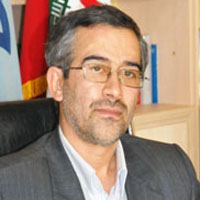Effect of allogeneic bone marrow derived stromal cells on induced third-degree skin burn healing in mouse
Author(s):
Abstract:
Background
Recently، bone-marrow-derived cells have introduced new therapeutic approaches to the management of wound healing in severe skin injuries. Bone marrow-derived stromal cells are described as a heterogeneous population، including mesenchymal stem cells، hematopoietic stem cells، and fibro-blast cells. Results derived from several studies indicate that these cells may contribute to tissue regeneration whether through producing variety of bioactive growth factors and/or by differentiation into mesoderm lineage. The aim of the present study was to investigate the effect of subcutaneous administration of bone marrow-derived stromal cells in repairing or regeneration of skin wounds induced by third-degree burn in a mouse model. Methods
In an experimental study that was performed in Urmia University research center from December 2011 to June 2012، The third-degree skin burn was induced on the shaved backs of healthy 7-8 week old male mice (N=18) using a metal rods heated in boiling water. After 1 hour، based on the equal physical condition mice were randomly divided into two separate groups and then subcutaneously administered with phosphate buffered saline (PBS; 400 µl) or bone marrow-derived stromal cells (106 cell in 400µl PBS) at the burn site. 7، 14 and 21 days after induction of burn injury، biopsies were taken from burn wounds and then the sections were prepared. Subsequently the prepared sections were stained with hematoxylin/eosin and Masson''s trichrome to explore histopathological changes evoke by administration of bone marrow derived stromal cells in comparison with control subjects. Results
Considering investigated parameters including formation of granulation tissue (respectively on days 7، 14 and 21 P≤ 0/007، P≤ 0/0013 and P≤ 0/001)، angiogenesis (on day 21 P≤ 0/002) and collagen deposition، in mice treated with bone marrow-derived stromal cells the rate of healing of third-degree thermal burns was significantly accelerated when compared to the PBS-treated mice. Conclusion
This experimental modulation of wound healing suggests that bone marrow-derived stromal cells can significantly enhance the rate of wound healing possibly through stimulation of granulation tissue، angiogenesis، fibroblast proliferation and collagen deposition.Keywords:
Language:
Persian
Published:
Tehran University Medical Journal, Volume:72 Issue: 7, 2014
Pages:
449 to 456
https://magiran.com/p1321050
سامانه نویسندگان
مقالات دیگری از این نویسنده (گان)
-
Effect of Local Transplantation of Mesenchymal Stem Cell/Macrophage Culture Supernatants on Oxidative Stress Markers in Wound Healing
Nima Mozaffari, Rahim Mohammadi *, Nowruz Delirezh, Rahim Hobbenaghi, Vahid Mohammadi
Iranian Journal of Veterinary Surgery, Winter-Spring 2025 -
Effect of curcumin-loaded polycaprolactone scaffold on Achilles tendon repair in rats
Narges Sufian, Mehdi Behfar *, Rahim Hobbenaghi, Siamak Asri-Rezaei
Veterinary Research Forum, Nov 2024


